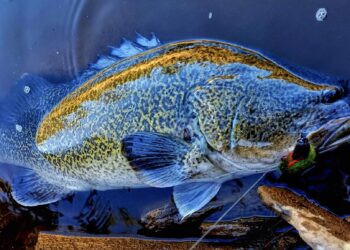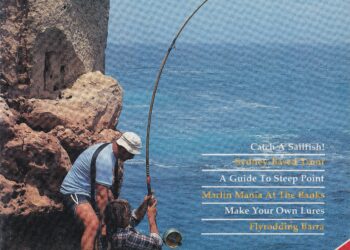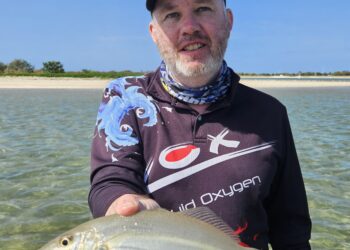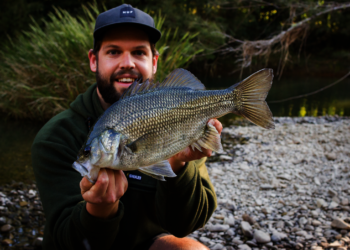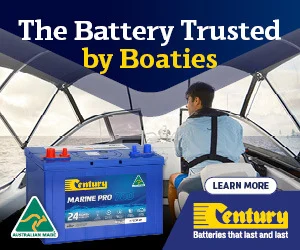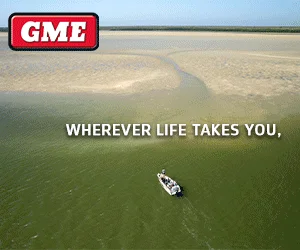WHEN compared to southern states, winter in Queensland is relatively mild and the fishing on the offshore grounds is generally very good. The current slows down a lot, giving good access to the wider reefs that have largely been unfishable through the warmer months. Despite this, it is rare to see water temperatures less than 22 degrees beyond the continental shelf and game fishing can be quite good throughout the winter months with all three marlin species still turning up for those who are persistent.
Fishing the deeper reefs in winter produces a wide range of species, but the main target fish are snapper, pearl perch, kingfish and amberjacks. In closer to shore mulloway and teraglin are very common, and some of the biggest Spanish mackerel turn up in June and July as they return north from their southern migration. Quite a few wahoo are also caught in early winter. Cobia are another species worth chasing on the closer reefs and the winter run generally consists of big adult fish over 20 kilos in weight.
Weather conditions in winter are generally favourable, with far less strong south easterlies and a lot less swell. The predominant wind is from the west. Always remember that when westerlies of 20 knots or more are forecast, it is not the time to head out wide as these can create really rough conditions very quickly, and while it may look flat in close, out on the shelf it can be very wild and woolly!
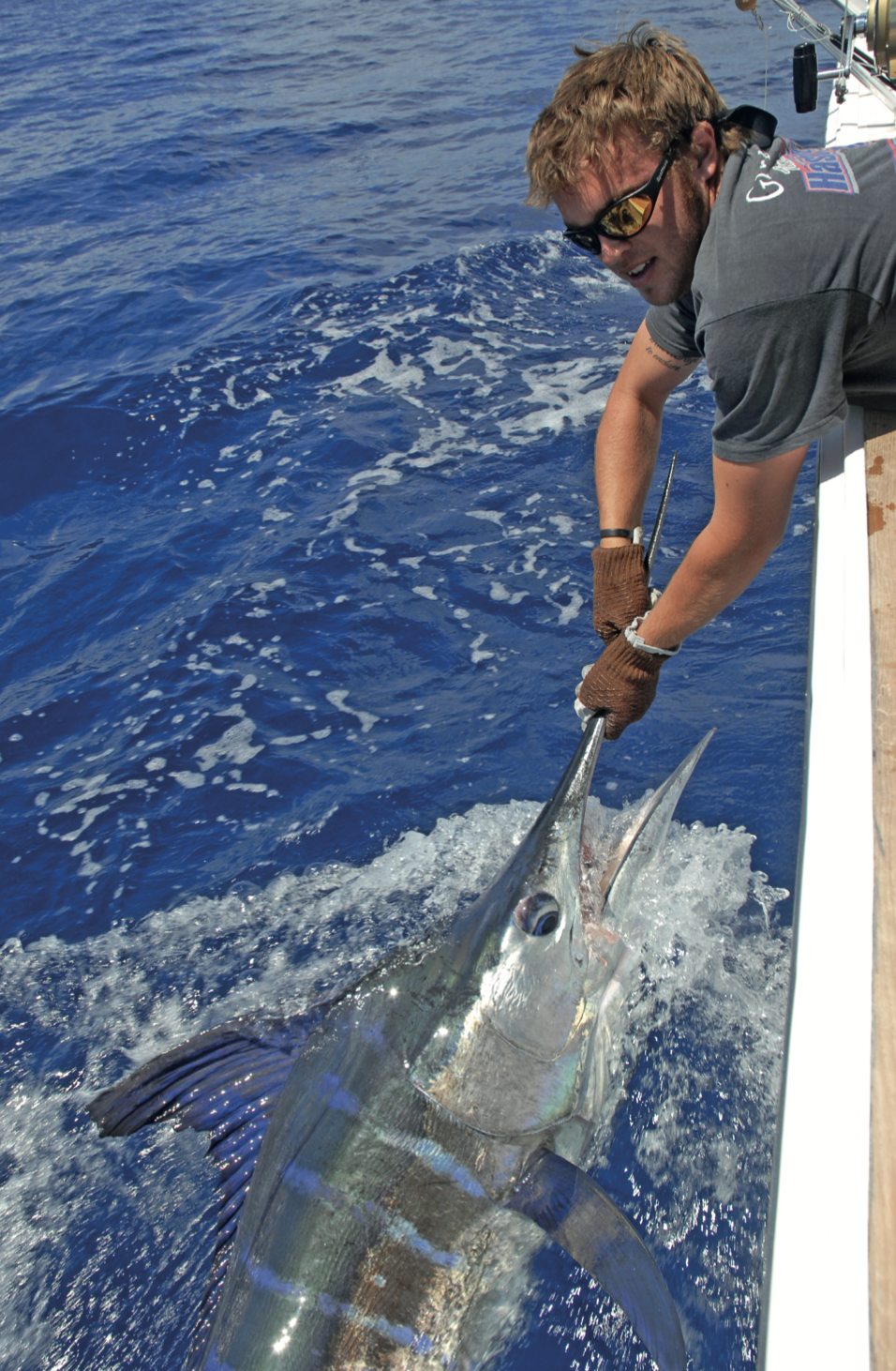
It is important to always head out with a game plan in winter with a couple of back up plans if “plan A” fails to produce. Due to the closed season for snapper and pearl perch that runs for a month from mid-July to mid-August, a lot of anglers have modified their approaches at this time of year. Deep dropping using electric reels in 150 to 400 metres of water has become increasingly popular, targeting species such as Bar cod and flame snapper. Jigging on the wider reefs using both slow jig and fast techniques is increasingly popular. The following is a species guide to some of the common species we chase in winter with a few tips as to how we approach each type of fish.
Marlin fishing in winter requires a bit of research, as the offshore eddies can be quite fickle at this time of year. It pays to carefully study the sea surface temperature charts and work out where the eddies and temperature breaks are located. This can save a lot of time. If the charts look unfavourable, consider other options. When you find a patch of good water troll big skirted lures on 37 kilo tackle. In winter the main bait fish off the continental shelf are sauries and striped tuna, so always include a few blue and silver or purple and Greeny story.
Blue and striped marlin
silver lures in your trolling spread. I’ve found the best depths to troll in winter are between 200 and 400 metres, depending on water temperature. A lot of the blue marlin caught off south east Queensland in winter are big fish around 180 kilos so be prepared for a long fight. As the water temperature drops a bit striped marlin become more common, and close to the shelf there are still black marlin to be caught. Other bycatch includes yellowfin tuna, big wahoo and dolphin fish. In winter there can be good schools of yellowfin out past the thousand metre line.
Spanish mackerel
While the number of Spanish mackerel greatly decreases in the winter months, the average size generally increases significantly, and fish over 20 kilos can be relatively common. The giants require a different approach to the smaller summer mackerel. It is a case of using big baits for big fish. Whole bonito, small tuna and tailor rigged so they swim on a large set of ganged hooks are the most effective way to get big Spaniards interested. These bigger fish spend most of their time hunting close to the bottom. Trolling big rigged baits and live baits from a downrigger is an extremely effective method to catch big winter Spaniards.
When I am chasing snapper on the close reefs it is common in early winter to have
big mackerel move into your berley trail. I like to put out a big live bait such as a tailer or a big slimy mackerel out well behind the boat on a short wire leader. Leave the reel in gear with the drag set at about 2 kilos. If you leave it in free spool you usually miss the hook
up on a fast moving mackerel. I’ve caught quite a few big mackerel in June and July as by-catch when chasing snapper and they are always welcome.
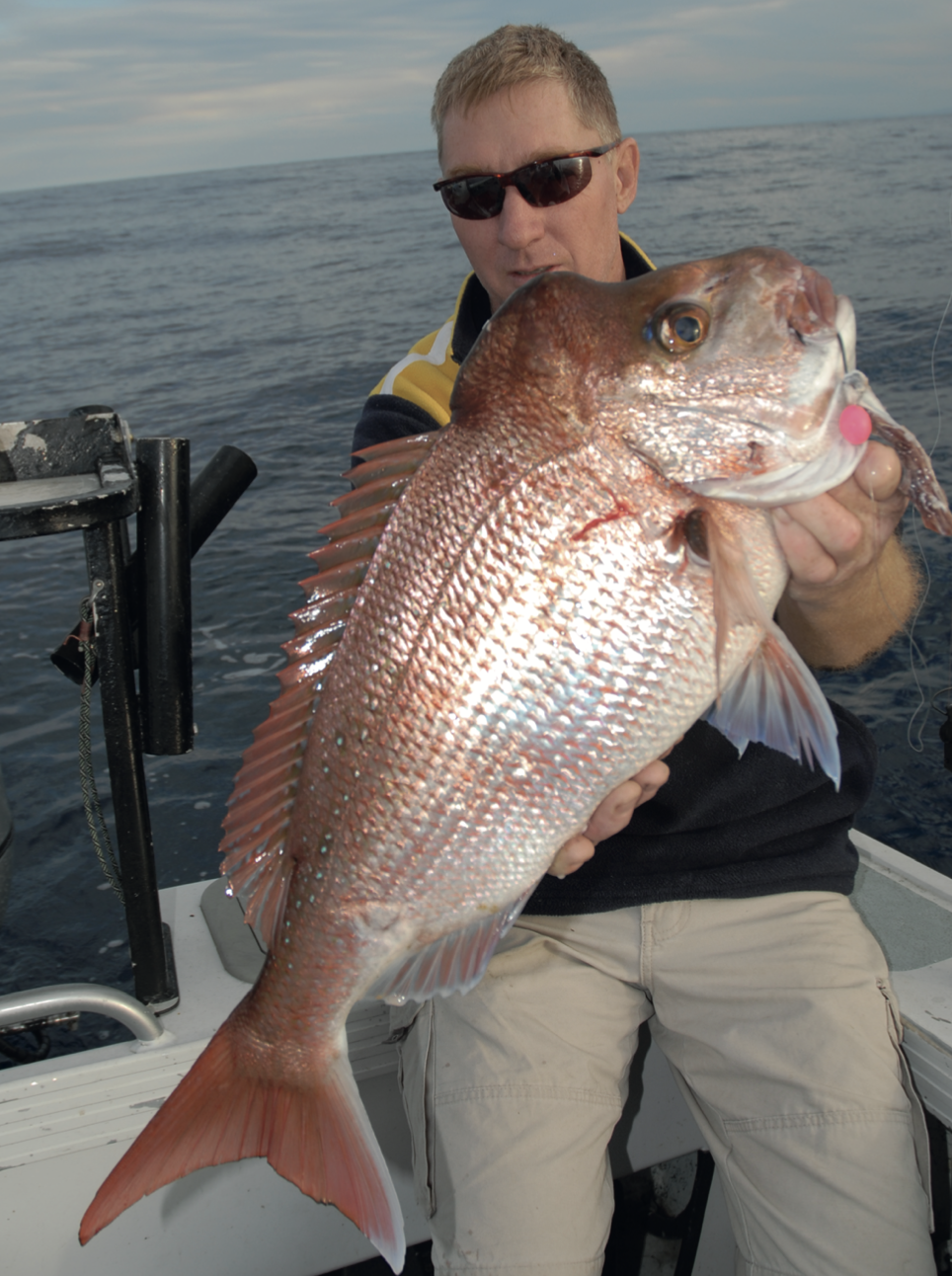
Snapper
Snapper numbers in South East Queensland have greatly reduced over the last two decades which is why we now have a closed season. They are also a bit harder to catch. In days of old you could catch snapper hand over fist on a simple paternoster rig in the middle of the day but this rarely works now. The key to snapper fishing is to fish light to get the bites, and if you are at anchor berleying always helps.
On the closer reefs near populated centres it is important to fish either at dawn or dusk. Snapper don’t generally bit well once it is completely dark, and in reefs less than 50 metres deep are rarely caught in the middle of the day. On the wider reefs between depths
of 60 and 90 metres the bite tend to last longer. The best rig for snapper is the simplest one.
I prefer to use mono rather than braid when I am bait fishing, and a small lead running down to a single hook on 10 kilo mono is a very effective way to fish. Once you’ve found your spot and see a few fish on the sounder I like to anchor up. While I’d love to have an I-Pilot on my big plate boat it isn’t feasible at the moment so we anchor using conventional reef pick and chain over the top of the fish. When the anchor holds and you are in good position turn off your sounder. Snapper seem to get very shy when a big transducer is constantly pinging away. Commence a berley trail and slowly drift your baits down to the bottom. You may have to adjust your sinker size according to current. Most snapper hit the bait from mid-water onwards. Don’t leave your bait sitting on the bottom, it just attract vermin.
Alternative methods include slow jigging and soft plastics. The Gulp Nemesis is my favourite soft plastic for big snapper. Another interesting method that works quire well is slow trolling small Rapalas or similar lures from a downrigger so the lure runs a few metres off the bottom. This method catches a lot of great fish on the closer reefs and also seems to work well long after the sun is in the sky.
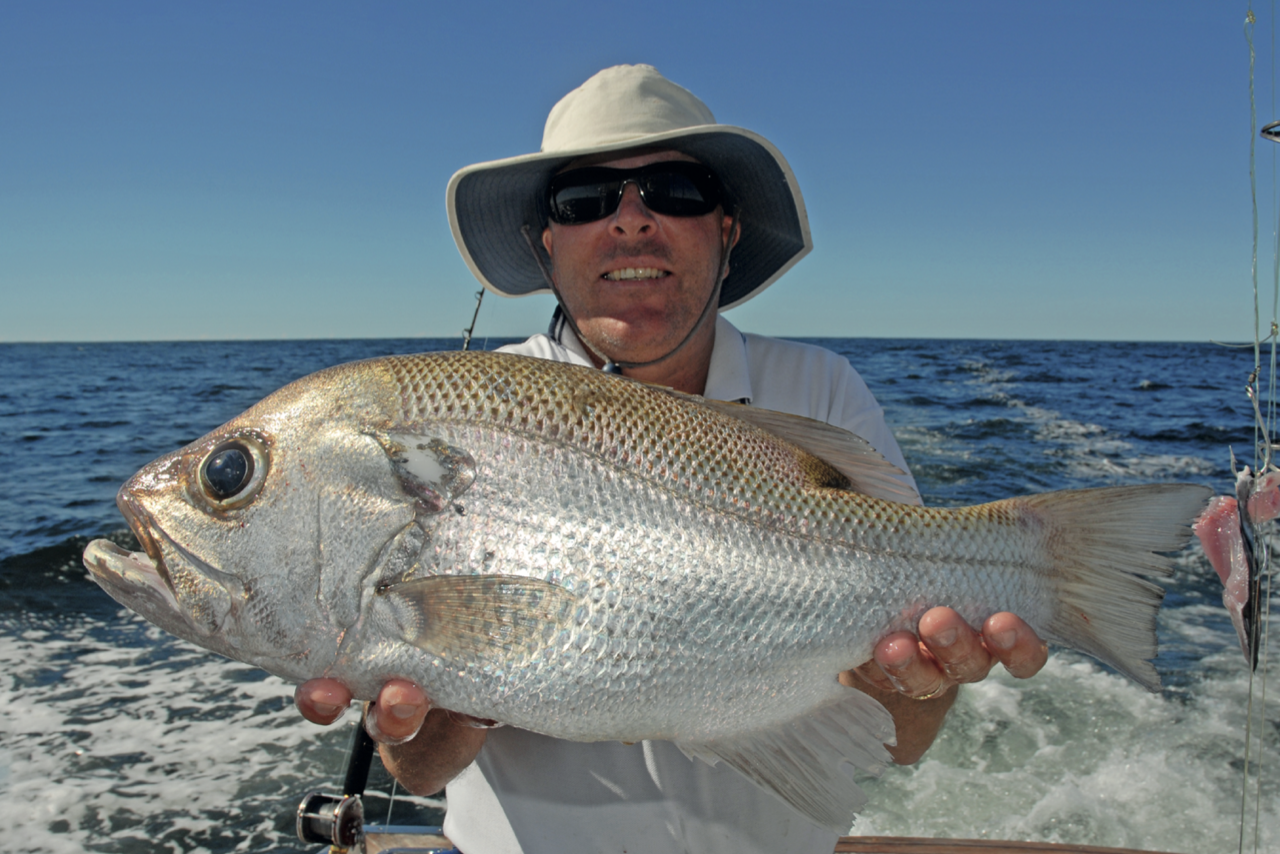
Pearl perch
These delicious fish are found all along the coast of South East Queensland and tend to be found on the deeper reefs between 60 and 120 metres. They are quite vulnerable to over fishing and like snapper are protected by a one month closed season. Pearlies like to school on pinnacles and deep reef where the bottom is covered with wire weed. They appear in vertical schools on an echo sounder. Pearl perch can be caught on both bait and lures and are very partial to squid baits. In general a simple paternoster rig works well on pearl perch. Deeper pinnacles in around 120 metres of water commonly produce consistent big pearl with fish over 3 kilos being common.
Pearl perch also respond to metal jigs and slow jigging has become increasingly popular in recent years. The addition of an octopus skirt seems to increase effectiveness. Octa jigs also work well. Some of the biggest pearl perch we have caught in recent years have eaten deep live baits intended for amberjacks.
Cobia
Early winter is usually the best time to target cobia in South East Queensland. These unusual fish turn up on the closer reefs in June in variable numbers. In a good season most boats chasing them have good catches, but in some years few show up. Very little is known about the migration of this species. The best way to target Greeny story.indd
them is to fish known cobia spots, anchor up, berley with cut fish pieces and fish big baits at different levels in the water column. These fish have huge mouths and eat a wide range of creatures. I’ve found blue swimmer crabs, whole small sting rays and a variety of small fish species in their gut cavity. When targeting cobia it pays to be patient. I like to fish one live bait a couple of metres off the bottom, another mid water and one free swimming in the surface layers. The fish tend to arrive at your spot in small schools, and while you may wait several hours for a bite, it isn’t uncommon to have double hook ups when they arrive. My favourite cobia live baits are tailer, tarwhine, goat fish and big slimy mackerel. Big baits work more effectively. A single 10/0 pinned through the nose of the bait is all you need. My biggest ever cobia, a fish over 40 kilos, ate a snapper that was well over legal size.
Cobia also respond to soft plastics and we’ve caught some big ones on Gulp Jerk shads. Cobia are one of the hardest fighting fish in the ocean, and on light tackle can take hours to land. Somewhere in the fight they will generally come to the surface and can easily be mistaken for a shark due to their brown coloured backs. When landing a cobia make sure you have a decent gaff. They are one of the wildest species you will ever bring on board! Cobia are superb eating and are great crumbed, eaten in fish curries or as sashimi. The flesh is very firm and they freeze well.
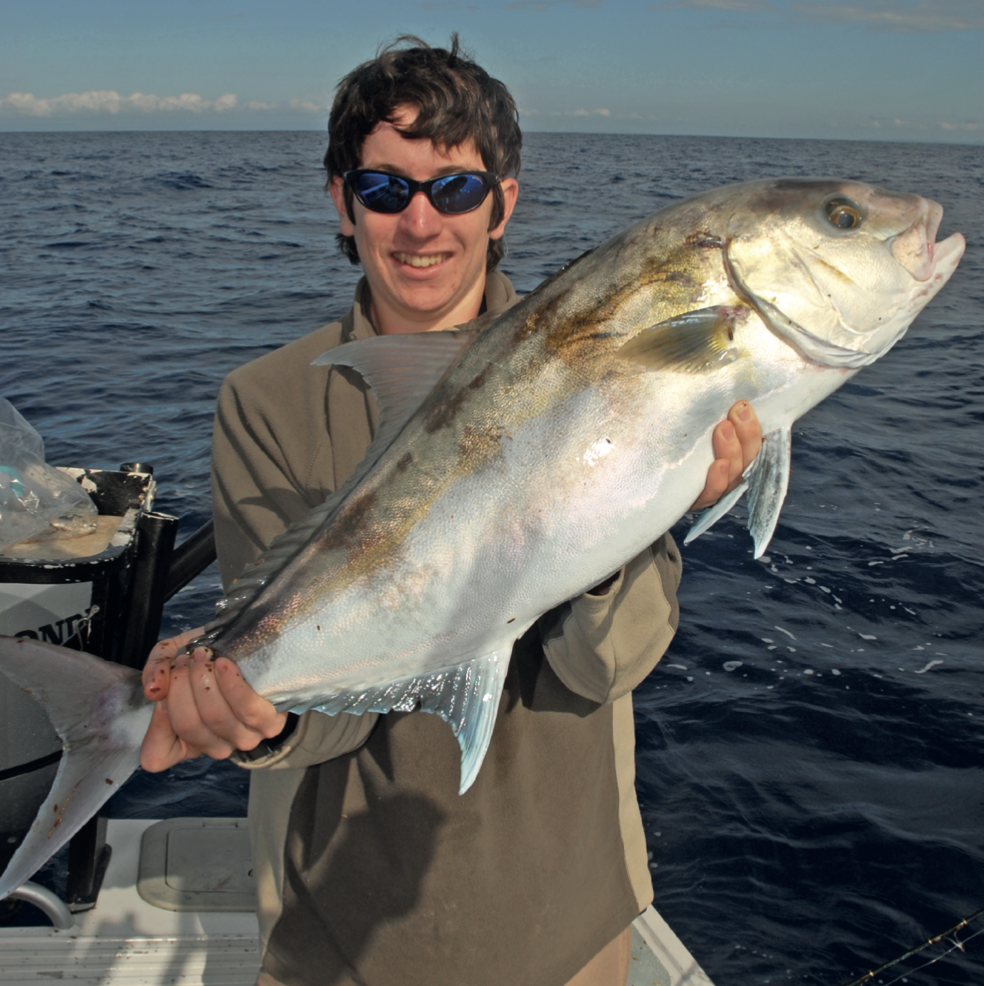
Amberjacks, kingfish, and samson fish
Out on the deeper reefs in winter all three of these species are common. The eating qualities of kingies in South East Queensland can be quite poor due to a protozoan that occurs in the flesh, making them quite mushy when cooked. Small amberjacks and samson fish however are great eating. All three species respond to deep fished live baits and metal jigs. The best reefs tend to have high pinnacles, the same type of reefs where pearl perch are found. Big amberjacks over 40 kilos turn up each season, but bust offs on the bottom are very common.
Mulloway and teraglin
Winter is the best time to chase both of these species. Teraglin are a great eating fish and love small live baits and bite well at night, particularly around the full moon period. Mulloway and teraglin often school together, and when you are trying to catch a decent mulloway teraglin can be annoying as they constantly steal hard won live baits.
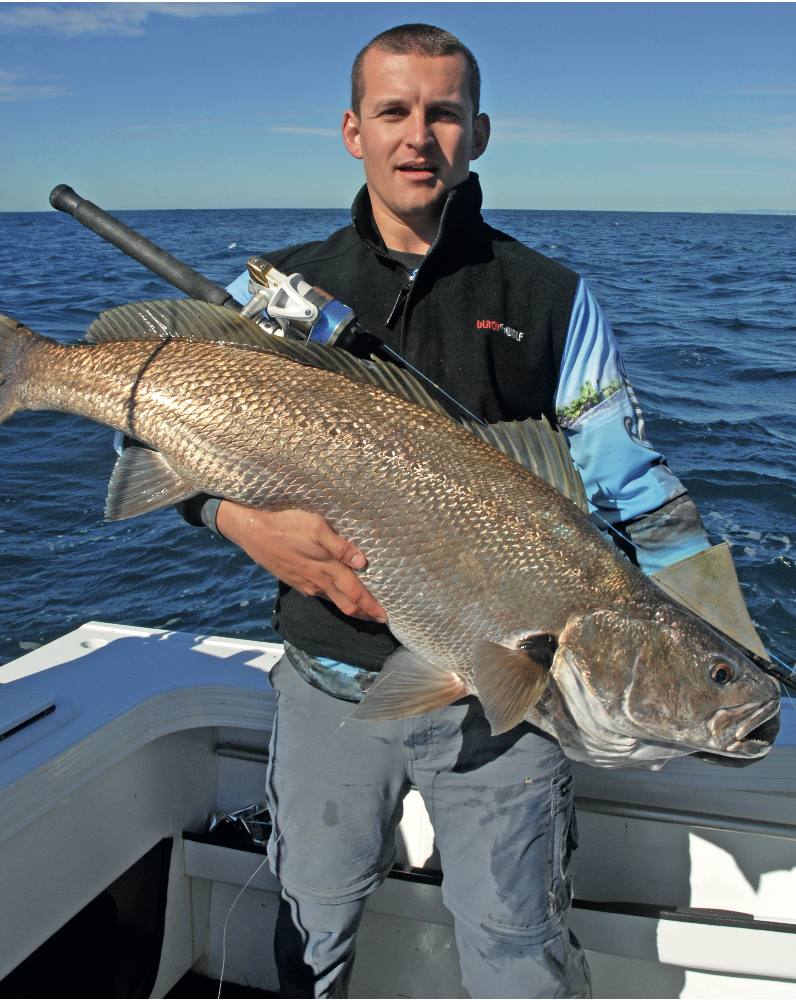
The key to catching mulloway on the close reefs in winter is to find a spot that has some kind of cave or shelter close to it. Artificial reefs, wrecks and craggy reef tend to hold fish. If you find a good spot it will generally keep rewarding you. When chasing mulloway fish your live baits close to the bottom. Most of the bites come just after the sun has set and the fish start to move around and feed. Most mulloway on the offshore reefs are between 100 and 115cm long, with the occasional bigger fish. Sometimes they respond well to slowly drifter large pilchards or whole slimy mackerel, but nothing beats live pike, big slimy mackerel and tailor.
As the above shows, there are plenty of great options on the offshore grounds of South East Queensland in winter. The weather is generally good and there are plenty of fish, from marlin to mulloway, that are available options.












